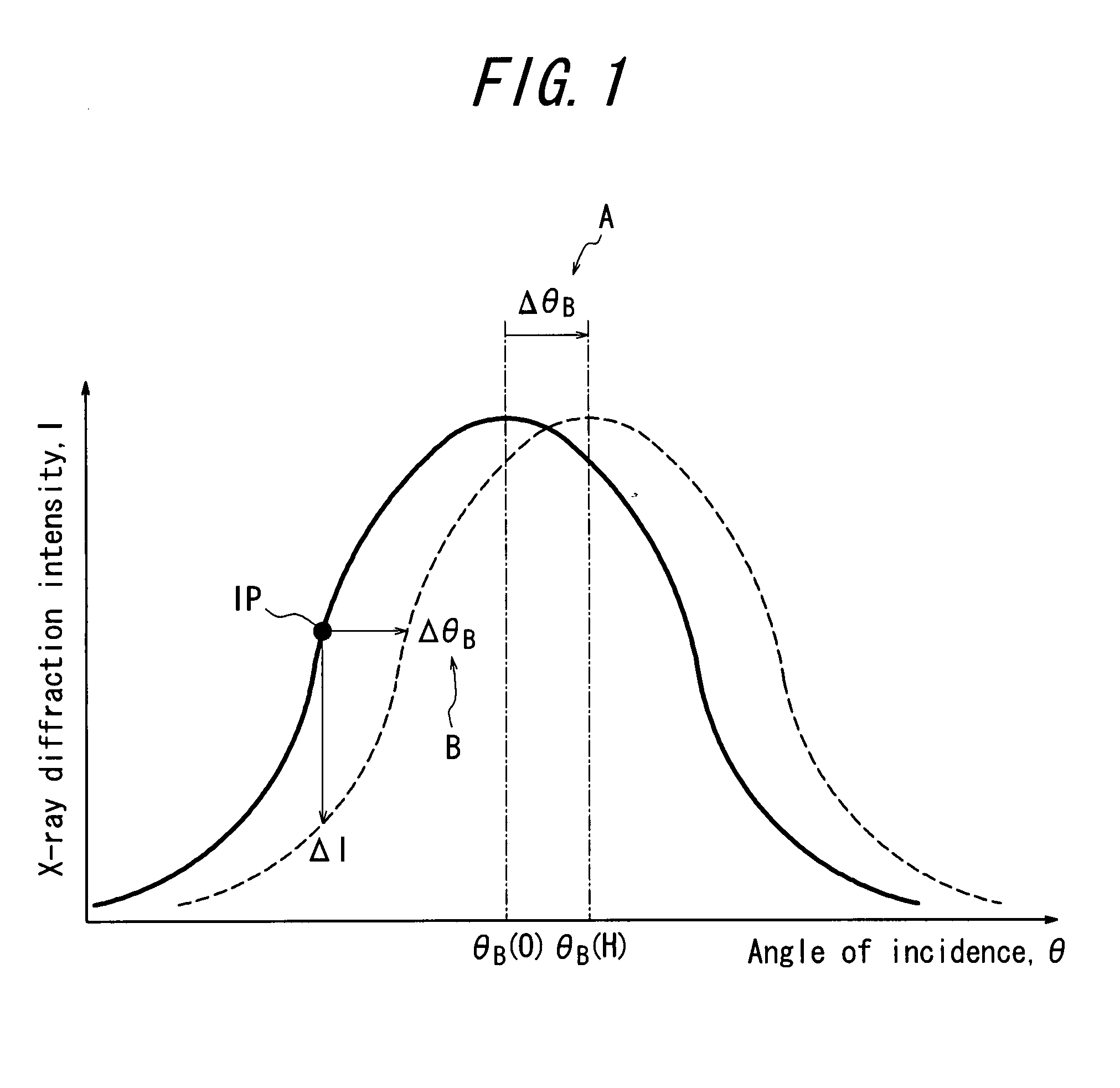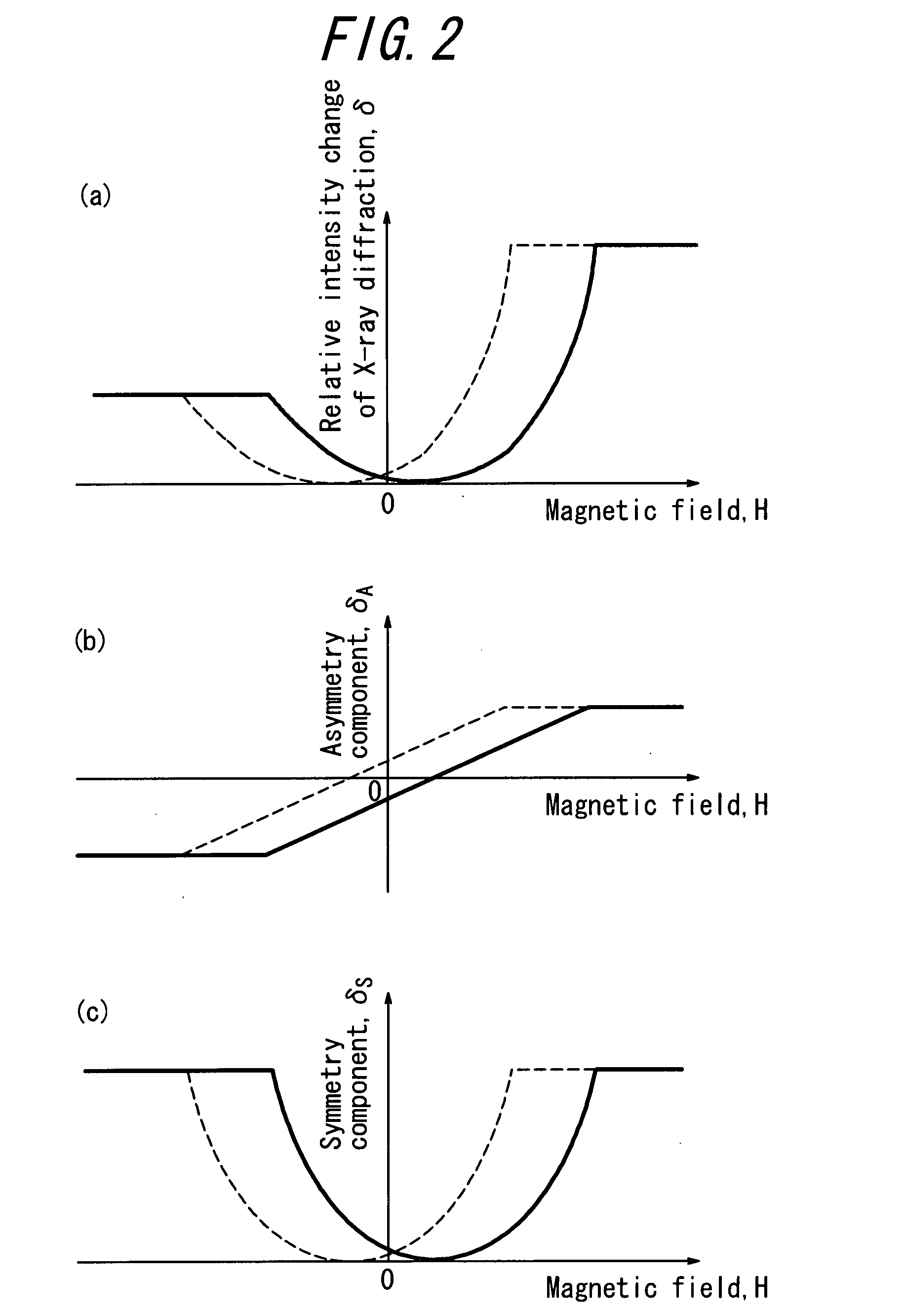Method and Device for Simultaneous Measurement of Magnetostriction and Magnetization
a simultaneous measurement and magnetostriction technology, applied in the direction of material analysis, instruments, and susceptibility measurements using wave/particle radiation, etc., can solve the problems of poor resolution, application of substances with large magnetostrictive coefficients, and inability to apply x-ray diffraction methods as a practical method
- Summary
- Abstract
- Description
- Claims
- Application Information
AI Technical Summary
Benefits of technology
Problems solved by technology
Method used
Image
Examples
first embodiment
[0058](The first embodiment) The case in which the present invention is utilized for the preparation of the standard sample for the first calibration of a device for measuring the magnetostrictive coefficient will be explained below with reference to the embodiments.
[0059]In the first embodiment, a single crystal sample of ferromagnetic substance, for example iron is prepared, and at a synchrotron radiation facility, by X-ray diffraction method according to the present invention, the measurement of magnetostriction property together with the measurement of the magnetization of said sample is performed. More specifically, the magnetostriction property of said sample is obtained from the shift amount of the Bragg angle, and the magnetization property is obtained as relative magnetization from the normalized asymmetry ratio of resonant magnetic scattering together with the magnetostriction.
[0060]The device for measurement is a goniometer arranged for resonant magnetic diffraction as sh...
second embodiment
[0065](The second embodiment) The present invention for use in the evaluation of standard sample for calibration of the macroscopic magnetostriction measurement device at low temperature will be explained below with other embodiments.
[0066]In this second embodiment, a ferromagnetic substance, for example iron, is prepared. The crystallographic magnetostrictive coefficient observed microscopically by X-rays, and the external magnetostrictive coefficient observed macroscopically may not be the same value, but in the case of iron, a single crystal sample, by observing the change of the lattice spacing by X-rays, presents the same value, and this property is utilized.
[0067]At a synchrotron radiation facility, by the X-ray diffraction method, by the same method as the former embodiment, the magnetostriction property of the sample are measured together with the magnetization. More specifically, the magnetostriction property of said sample is obtained from the Bragg angle shift, and the ma...
third embodiment
[0070](The third embodiment) The present invention for use in creating the calibration table in the case of calibrating macroscopic external magnetostrictive coefficient measurement device at low temperature will be explained below with reference to other embodiments.
[0071]In this third embodiment, the standard calibration sample is, for example, a single crystal sample of iron. This single crystal sample of iron presents a property of (ti, λFe(ti)) at low temperatures. Here, λFe(ti) is a crystallographical magnetostrictive coefficient at temperature T=ti (i=1,2,3 . . . ) measured by observing the change of the lattice spacing by X-ray diffraction method according to the present invention.
[0072]The macroscopic magnetostriction measurement device, for example strain gauge, is attached to the standard sample for calibration in advance, at room temperature.
[0073]This standard sample for calibration attached to the strain gauge is placed under the same condition as the environment in wh...
PUM
 Login to View More
Login to View More Abstract
Description
Claims
Application Information
 Login to View More
Login to View More - R&D
- Intellectual Property
- Life Sciences
- Materials
- Tech Scout
- Unparalleled Data Quality
- Higher Quality Content
- 60% Fewer Hallucinations
Browse by: Latest US Patents, China's latest patents, Technical Efficacy Thesaurus, Application Domain, Technology Topic, Popular Technical Reports.
© 2025 PatSnap. All rights reserved.Legal|Privacy policy|Modern Slavery Act Transparency Statement|Sitemap|About US| Contact US: help@patsnap.com



